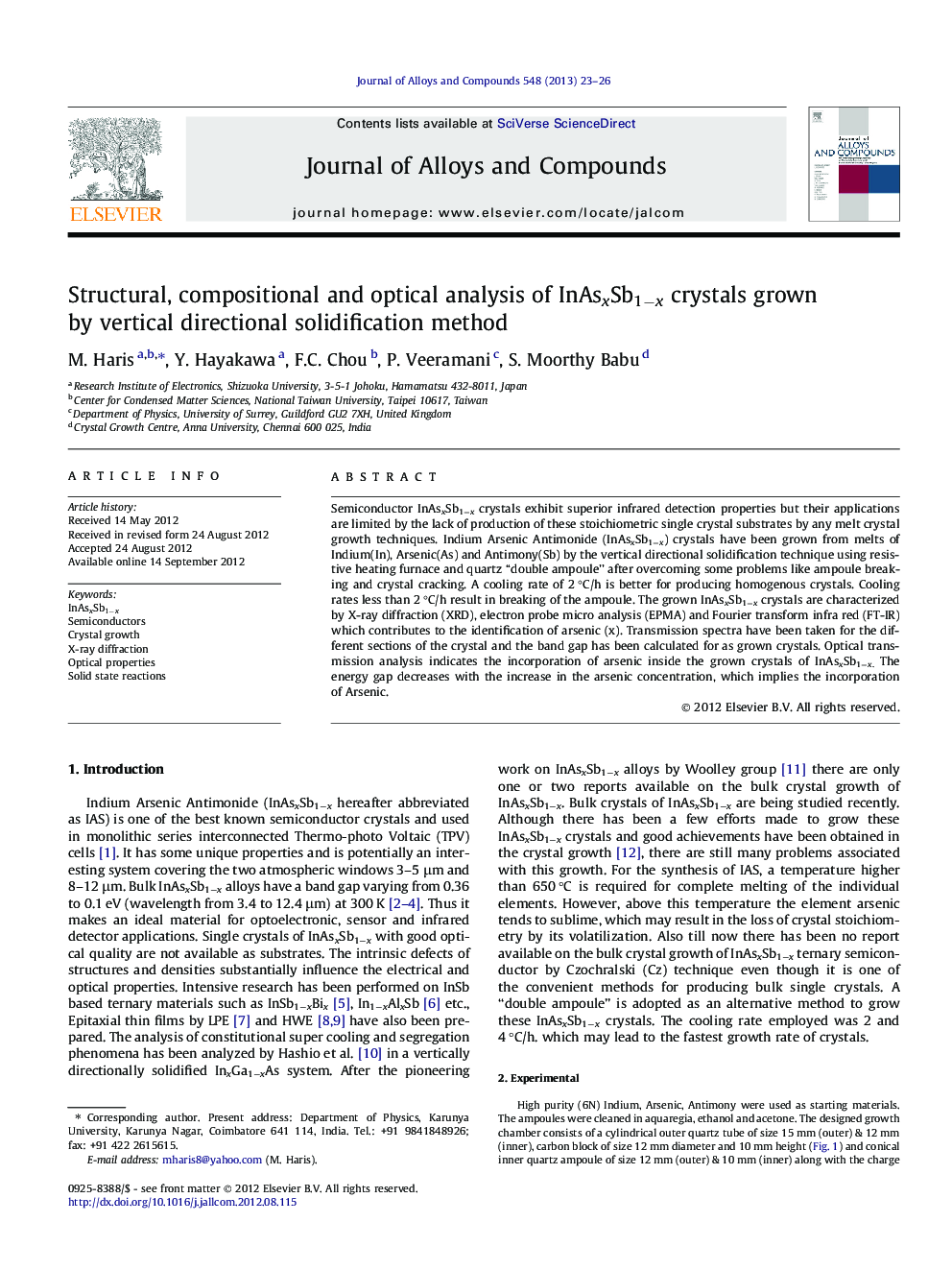| Article ID | Journal | Published Year | Pages | File Type |
|---|---|---|---|---|
| 1615371 | Journal of Alloys and Compounds | 2013 | 4 Pages |
Semiconductor InAsxSb1−x crystals exhibit superior infrared detection properties but their applications are limited by the lack of production of these stoichiometric single crystal substrates by any melt crystal growth techniques. Indium Arsenic Antimonide (InAsxSb1−x) crystals have been grown from melts of Indium(In), Arsenic(As) and Antimony(Sb) by the vertical directional solidification technique using resistive heating furnace and quartz “double ampoule” after overcoming some problems like ampoule breaking and crystal cracking. A cooling rate of 2 °C/h is better for producing homogenous crystals. Cooling rates less than 2 °C/h result in breaking of the ampoule. The grown InAsxSb1−x crystals are characterized by X-ray diffraction (XRD), electron probe micro analysis (EPMA) and Fourier transform infra red (FT-IR) which contributes to the identification of arsenic (x). Transmission spectra have been taken for the different sections of the crystal and the band gap has been calculated for as grown crystals. Optical transmission analysis indicates the incorporation of arsenic inside the grown crystals of InAsxSb1−x. The energy gap decreases with the increase in the arsenic concentration, which implies the incorporation of Arsenic.
► Bulk InAsxSb1−x crystals were grown using vertical solidification method. ► A double ampoule adopted as an alternative method to grow these InAsxSb1−x crystals. ► Carbon block as a heat sink is an useful technique for the nucleation process. ► The band gap for InAsxSb1−x with x = 0.02 and x = 0.05 are 0.148 and 0.14 eV.
